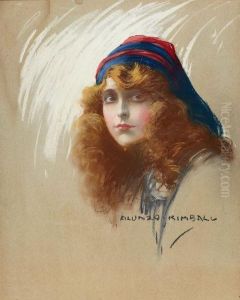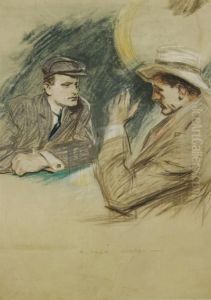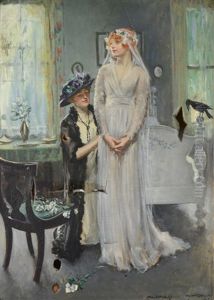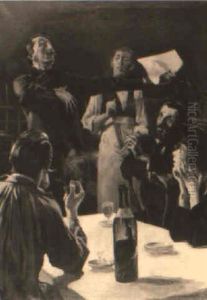Alonzo Kimball Paintings
Alonzo Kimball was an American artist and illustrator known for his portraits and magazine illustrations. Born in 1874 in Green Bay, Wisconsin, he grew up in an era when the demand for illustrated materials was growing rapidly due to advancements in printing technology and the proliferation of periodicals.
Kimball studied at the Art Institute of Chicago and later in Paris at the Académie Julian, a popular school for American artists in the late 19th and early 20th centuries. He perfected his skill under the tutelage of prominent artists such as Jean-Paul Laurens and Benjamin Constant. His education in Europe had a significant influence on his style, which combined the realism and detail of academic art with a softer, more impressionistic touch suited to the sensibilities of his era.
Upon returning to the United States, Kimball settled in New York City, where he launched his career as an illustrator. He worked for leading magazines of the time, including 'Harper's Magazine', 'Scribner's Magazine', and 'The Saturday Evening Post'. His illustrations often featured high society and everyday American life, and he was particularly adept at capturing the likenesses and personalities of his subjects in his portraits.
In addition to his magazine work, Kimball also illustrated books and created advertising art. His illustrations appeared in various publications and promotional materials, reflecting the tastes and interests of early 20th-century America. Despite the popularity of his commercial work, Kimball never achieved the same level of fame as some of his contemporaries like Norman Rockwell or J.C. Leyendecker.
Alonzo Kimball’s career was tragically cut short when he died in 1923 at the age of 49. His work, however, remains a testament to the golden age of American illustration, capturing an era's essence with grace and charm. Today, his illustrations are appreciated by collectors and art historians for their technical skill and historical value, offering insight into the visual culture of the early 1900s.



